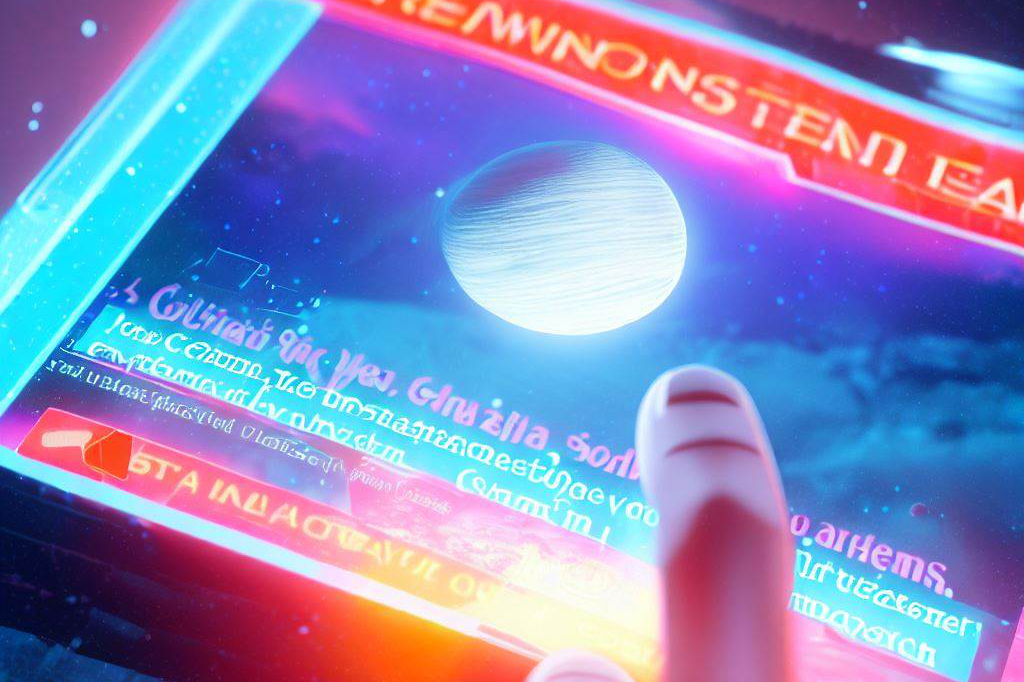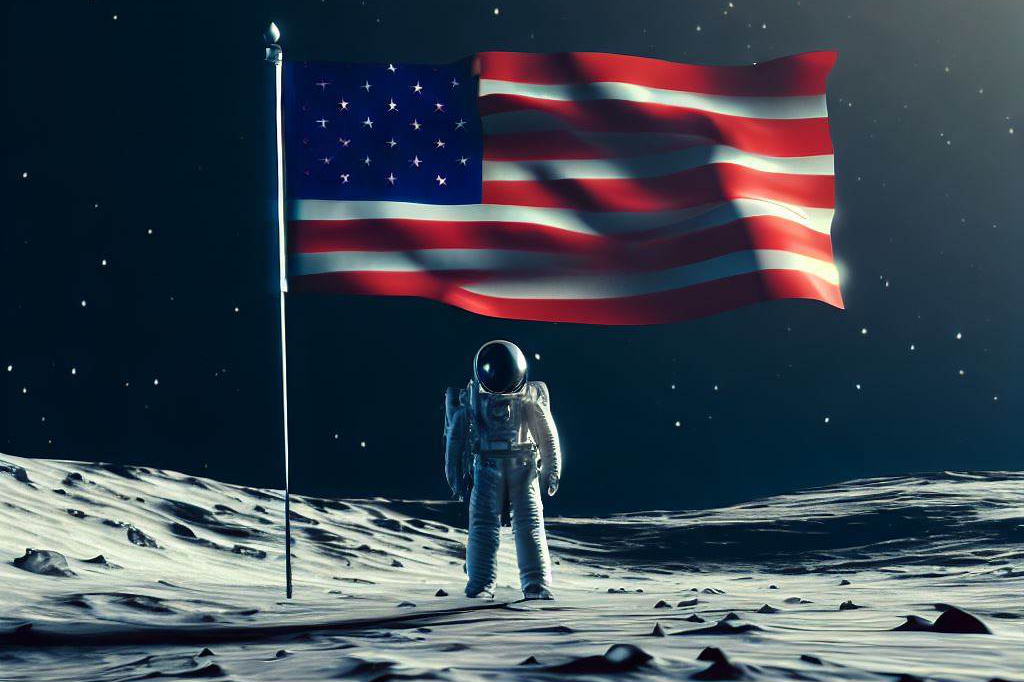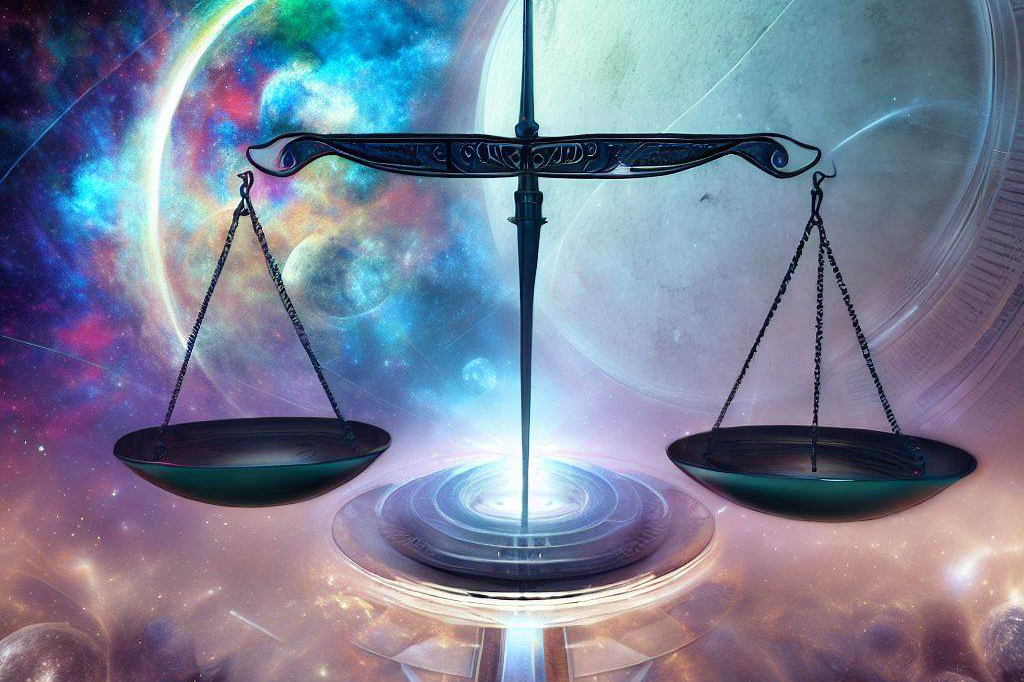Exploring the Gray Area of Space Ownership
As human beings, we have always been fascinated by the unknown, and when it comes to space, the possibilities are endless. With technology advancing at a rapid pace, the possibility of colonizing other planets and consuming resources from celestial bodies is becoming more feasible.
However, with this new frontier come complex questions regarding ownership rights and responsibilities. The legality of claiming ownership of celestial bodies is a topic that has been debated for decades.
The Outer Space Treaty of 1967 established that no country can claim sovereignty over any part of outer space, including the Moon and other celestial bodies. Despite this treaty being in place for over half a century, there have been recent attempts by private entities to claim ownership over various celestial bodies in our solar system.
Why Discussing Celestial Body Ownership is Important

The idea of owning parts of space raises numerous ethical concerns.
Who owns these resources?
How will they be distributed?
Will access be granted only to those who can afford it?
The potential exploitation of these resources without regard for conservation or sustainability could threaten our planet’s environment as well as future generations. Additionally, discussions about celestial body ownership have economic implications.
Resources such as rare metals and water on celestial bodies could potentially aid in space exploration efforts or benefit Earth-based industries. However, debates on how these resources will be utilized remain unresolved.
Despite opposition from some groups that argue that outer space should remain free from commercialization and greed-driven activities, discussions on whether countries or private entities can claim ownership over these celestial bodies have become increasingly important. This article aims to present both sides of this debate while exploring possible solutions to ensure the responsible use and fair distribution of resources beyond our world.
Historical background on Celestial Body Ownership

The concept of celestial body ownership has been a topic of discussion for centuries. Despite this, there is no universally agreed-upon framework that governs the ownership of celestial bodies. However, the Outer Space Treaty of 1967 is considered to be one of the most significant international treaties that address space law and have a bearing on space ownership.
The Outer Space Treaty of 1967
The United Nations General Assembly adopted the Outer Space Treaty in October 1967 in response to Cold War-era aspirations for space exploration. This treaty aims to ensure that outer space remains peaceful and free from claims by any nation or entity.
It encompasses principles such as
- freedom of exploration,
- prohibition against weapons testing and deployment in space,
- and prohibition against territorial claims in outer space or on celestial bodies.
As per the treaty, no country can claim sovereignty over any extraterrestrial body or territorial rights over outer space.
Despite its noble intentions, there are still significant ambiguities within this treaty when it comes to issues related to property rights for private entities. The lack of clear legal frameworks has led several countries and organizations to pursue alternative methods to claim ownership over celestial bodies.
Previous attempts to claim ownership

Two notable examples include the United States’ attempts at claiming sovereignty over parts of the Moon during the Apollo missions between 1969-1972 and Luxembourg’s recent legislation related to asteroid mining.
The United States flag was planted on the surface during all six Apollo lunar landings as a symbol of national pride; however, they never claimed any territorial rights over parts of the Moon. There were attempts by some members within Congress during that time period to seek ways around Article II provisions in order for NASA missions to also possess commercial value but these were ultimately unsuccessful
Luxembourg passed a law in July 2017 allowing private companies to obtain concessions to explore and mine resources on asteroids. While this legislation does not amount to a claim of ownership, it is seen as a way around the Outer Space Treaty’s prohibition against national appropriation.
Arguments for celestial body ownership

Economic benefits:
The exploration and exploitation of the resources present on celestial bodies such as the Moon, Mars, and asteroids have the potential to generate significant economic benefits.
One of the main economic advantages of owning these celestial bodies is mining resources.
The Moon, for example, is known to be rich in valuable minerals such as helium-3 and rare-earth elements that are essential components in high-tech applications like smartphones and solar panels. Additionally, asteroids are believed to contain large amounts of precious metals like platinum that could be used for a range of industrial purposes.
Another potential benefit is tourism. Imagine being able to visit a lunar resort or watch a Mars sunset from a nearby hotel room!
The first private spaceflight companies are already offering suborbital flights that allow customers to experience several minutes of weightlessness and see the curvature of the Earth from space. Commercializing space travel could create a new tourism industry worth billions of dollars.
National pride and prestige:

Another argument often advanced by advocates for celestial body ownership is national pride and prestige.
For countries with limited natural resources or small territories, owning land beyond Earth’s atmosphere symbolizes their scientific prowess, technological advancement, and global influence. This kind of symbolism has been evident since 1957, when Russia launched Sputnik 1 into orbit around Earth, becoming the first country to put an artificial satellite in orbit around Earth.
In recent years, China has made headlines with its ambitious lunar exploration program, that includes plans for crewed missions to establish a permanent base on the Moon by 2030. Such programs not only generate publicity but also serve as catalysts for investment in science education among students who aspire to become astronauts or astrophysicists.
Moral obligations:

There is also an argument that countries have moral obligations to protect humanity’s future by expanding beyond Earth’s boundaries.
This view posits that by becoming a multi-planetary species, we reduce the risk of being wiped out by catastrophic events such as an asteroid impact, a supervolcanic eruption, or a global pandemic. Therefore, owning celestial bodies and investing in space exploration can be seen as steps towards preserving humanity’s long-term survival.
Arguments for celestial body ownership focus on economic benefits, national pride and prestige, and moral obligations. While these arguments may be compelling and persuasive to some people, it is important to weigh them against the ethical concerns and legal implications of appropriating celestial bodies for private or national gain.
Arguments Against Celestial Body Ownership

Ethical Concerns
There are several ethical concerns related to claiming ownership of celestial bodies.
For one, it can be argued that no single entity has the right to claim ownership of something that belongs to all of humanity.
The exploration and exploitation of celestial bodies should be done in a way that benefits all people, rather than only a select few.
Another ethical concern is the potential damage to these environments.
Humans have a record of damaging the environment on Earth, and there is no reason to believe that we would behave differently on other planets or asteroids. Without proper regulations in place, there is the risk of causing irreversible harm, such as contaminating these environments with Earth-based microbes.
Environmental Impact

The exploration and exploitation of celestial bodies have significant environmental impacts. For example, mining ores from asteroids could disturb their geological structures and alter their orbits.
Similarly, constructing bases or habitats on these objects could change their physical characteristics. Any changes made by humans could also affect their gravitational pull, potentially altering their orbits in ways we cannot predict.
It’s also important to consider the impact of any potential life forms that may exist on these celestial bodies. The introduction of human activity and technology poses a threat to any organisms living beyond Earth’s atmosphere.
Legal Issues

The Outer Space Treaty prohibits national appropriation of outer space since it considers outer space to be “the province of all mankind.” Therefore, it does not recognize national sovereignty over any part of outer space. This means that countries cannot claim ownership of or establish territorial rights over any celestial body outside our planet’s atmosphere.
The lack of clear legal frameworks for private entities is another problem as well. The treaty states that “non-governmental entities” should seek authorization from appropriate national authorities before conducting activities in outer space but does not address private ownership.
Without clear regulations and legal frameworks, there is potential for disputes or even conflict between nations or private entities over the resources on celestial bodies. It is essential to establish a clear international regulatory body to oversee space exploration activities and ensure they are conducted in a way that benefits all of humanity, rather than just a few individuals or entities.
Possible solutions and alternatives

Collaboration between nations and private entities
One possible solution to the issue of celestial body ownership is for nations and private entities to collaborate on space exploration activities. This could take the form of joint ventures between countries or partnerships between government agencies and private companies.
By working together, these groups could pool their resources, expertise, and technology to achieve common goals while avoiding potential conflicts.
For example, NASA has partnered with several private companies, including SpaceX and Boeing, to develop new spacecraft capable of transporting astronauts to the International Space Station.
Similarly, some countries have formed international partnerships for space exploration missions. For instance, the European Space Agency (ESA) has collaborated with NASA on various projects over the years.
Collaboration between nations and private entities could also help address some of the ethical concerns associated with celestial body ownership. By working together, these groups could develop guidelines for sustainable resource extraction on celestial bodies while minimizing their impact on the environment.
Establishment of an international regulatory body to oversee space exploration activities

Another possible solution is the establishment of an international regulatory body to oversee space exploration activities. Such a body would be responsible for enforcing existing regulations related to celestial body ownership as well as developing new guidelines as needed.
The United Nations Office for Outer Space Affairs (UNOOSA) currently serves as a forum for discussion among nations regarding issues related to outer space. However, it does not have any legal authority over individual countries or private entities engaged in space exploration activities.
An international regulatory body would need to be established through a formal treaty signed by participating nations. Its responsibilities could include monitoring compliance with existing treaties such as the Outer Space Treaty of 1967 and developing new regulations related to resource extraction and environmental protection on celestial bodies.
Overall, both collaboration between nations and private entities as well as the establishment of an international regulatory body offer potential solutions to the issue of celestial body ownership. As space exploration activities continue to grow, it will be increasingly important for stakeholders to work together to ensure that resources are utilized in a sustainable and responsible manner.
Final Thoughts

While there are valid arguments for both sides about whether a country or private entity can claim ownership of a celestial body such as the Moon or an asteroid, it is clear that there are many ethical concerns that must be addressed in exploring these possibilities.
The Outer Space Treaty currently prohibits national appropriation of outer space, although some countries might still attempt to own parts of it. Overall, our study concludes that collaboration between nations is essential in exploring outer space without causing any harm to our ecosystem.
The future:
The exploration of outer space has always been fascinating because it represents new frontiers for humanity – something we haven’t yet fully explored but certainly believe we will one day accomplish successfully. While there are certainly challenges ahead when it comes to exploring celestial bodies like asteroids or moons in order to claim them for mining purposes or future colonization efforts (if at all possible), there’s no doubt that with proper collaboration and planning, we can achieve these goals without harming the environment or each other. The future of space exploration is one of great promise, and we look forward to seeing where it takes us next.

C M, a seasoned editor, journalist, and consultant, is deeply fascinated by the convergence of technology, space, and the future of humanity.
With a particular interest in transhumanity, futurology, and the philosophical and ethical dimensions of these domains, C M serves as the lead contributor to SpaceSpotlight and TranscendSphere.
When not penning insightful articles on these rapidly evolving fields, C M indulges in their love for podcasts and books, proudly embracing their status as a ‘Happy Nerd Extraordinaire!’



